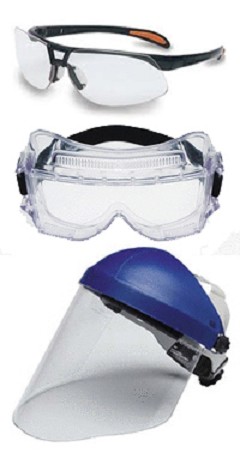 1. Create a safe work environment
1. Create a safe work environment
- Minimize hazards from falling or unstable debris.
- Make sure that tools work and safety features (machine guards) are in place.
- Make sure that workers (particularly volunteers) know how to use tools properly.
- Keep bystanders out of the hazard area.
2. Evaluate safety hazards.
- Identify the primary hazards at the site.
- Identify hazards posed by nearby workers, large machinery, and falling/shifting debris.
3. Wear the proper eye and face protection.
- Select the appropriate Z87 eye protection for the hazard.
- Make sure the eye protection is in good condition.
- Make sure the eye protection fits properly and will stay in place.
4. Use good work practices.
- Caution—Brush, shake, or vacuum dust and debris from hardhats, hair, forehead, or the top of the eye protection before removing the protection.
- Do not rub eyes with dirty hands or clothing.
- Clean eyewear regularly.
- Prepare for eye injuries and first aid needs.
5. Have an eye wash or sterile solution on hand.
via CDC – Eye Safety: Checklist – NIOSH Workplace Safety and Health Topic.
